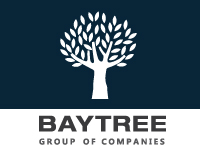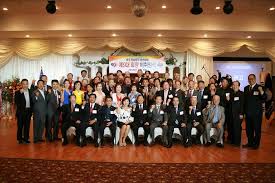CA
ON
부동산캐나다 (Korean Real Estate Post)
전화: 416-449-5552
1995 Leslie Street Toronto, ON
.jfif)
조준상 (로열르페이지 한인부동산 대표)
전화: 416-449-7600
1993 Leslie St. Toronto, ON

한인 시니어 탁구협회
전화: 647-209-8933
1100 Petrolia Rd Toronto, ON
4.jpg)
행복부동산 -수잔정 Home Standards Brickstone Real
전화: 647-866-7878
180 Steeles Ave W Unit 30, Thornhill, ON

변호사 정찬수 법률사무소
전화: +82 2-536-1144
서울특별시 서초구 서초동 Toronto, ON
1.jfif)
캐나다 공인 컨설턴트 - 한인크레딧 컨설팅
전화: 416-897-8438
1 High Meadow Place, Unit 2 North York, ON

준비된 바이어 그룹 , BAYTREE 이너써클
전화: 416-226-5999
7030 Woodbine Ave. Suite 103 Toronto, ON

한인을 위한 KOREAN JOB BANK
전화: 6476245886
4065 Chesswood Drive Toronto, ON
.jpg)
1004열쇠
전화: 416-895-1004
4 Blakeley Rd. Toronto, ON

럭키 여행사
전화: 416-938-8323
4699 keele st.suite 218 toronto Ontario M3J 2N8 toronto, ON

호남향우회 (토론토)
전화: 647-981-0404
7 Bishop Ave. #2411 Toronto, ON

스마트 디지탈 프린팅 - 인쇄 및 디자인
전화: 416-909-7070
4065 chesswood dr. Toronto, ON
.jfif)
It would be a place where all the visitors including me share the life stories and experiences through their activities,especially on life as a immigrant.
Why don't you visit my personal blog:
www.lifemeansgo.blogspot.com
Many thanks.
블로그 ( 오늘 방문자 수: 32 전체: 267,595 )
한국전쟁-재검토-washingtonpost에서.
lakepurity
2007-12-31
The Korean War: An Overview
By Michael Hickey
Denis Whybro, British tank commander in Korea
The Cold War turned hot for the first time in the Korean peninsula in the mid-1950s. Michael Hickey provides an overview of the so-called 'forgotten war'.
Page 1 of 5
1. Introduction
2. China's intervention
3. Stalemate
4. The aftermath
5. Find out more
Print entire article
Introduction
At the mid-point of a century that had already seen two appallingly destructive and costly global conflicts, a savage war broke out in a remote country at the extremity of the Asian landmass. During the world war of 1939-45, the future of the Japanese empire was decided at Allied summit meetings. In the short term, pending the return of Korean independence, Korea, a Japanese colony since 1910, was to be occupied north of the 38th parallel by Soviet Russia. To the south, a United States military administration under the direction of General Douglas MacArthur would control the area from its headquarters in Tokyo.
In the North, the Soviets backed a Stalinist regime under their client Kim Il-sung and created the North Korean Peoples' Army, equipped with Russian tanks and artillery. In the South, the chaotic political situation resulted in an American-backed administration under the presidency of Syngman Rhee, whose openly declared aim was the imposition of national unity by force. As a result of this stance, the American-trained South Korean army was limited to a lightly armed gendarmerie, lacking tanks, combat aircraft and all but a small amount of field artillery.
'The North Koreans advanced rapidly south, aiming to take the vital port of Pusan.'
After several years of increasingly bloody frontier incidents along the 38th parallel, the Republic of Korea was invaded by the North Korean Peoples' Army on 25 June 1950. Despite earlier indications, the Pentagon was caught off-guard. As the North Koreans swept south, overwhelming all opposition, the US called on the Security Council to invoke the United Nations Charter and brand the North Koreans as aggressors. This was done and member states were called on to send in military assistance. The first American troops were then sent in to stiffen resistance against the invader. The British government responded at once and elements of the Far East Fleet were soon in action along the Korean coast, together with ships of Commonwealth navies.
However, the North Koreans still advanced rapidly south, aiming to take the vital port of Pusan. The American troops hurriedly sent from occupation duties in Japan fared badly against superior North Korean troops, but General Walton Walker, commanding the 8th United States Army in Korea (EUSAK), rallied his forces and held the Pusan bridgehead as reinforcements began to arrive. These reinforcements included two British battalions from Hong Kong, the Middlesex and the Argyll and Sutherland Highlanders, and an Australian battalion from Japan. Furthermore, a strong brigade group was mobilised in England and several thousand reservists were recalled to active duty. The 29th Brigade set sail in October 1950, reaching Korea a month later just as it seemed that the war was over.
China's intervention
Corporal Derek Hirst of the Royal Army Medical Corps in Korea
In mid-September, General MacArthur brought off a masterstroke by landing two divisions 240km (150 miles) in the enemy rear at the port of Inchon. Their communications cut, and under heavy aerial bombardment, the North Koreans broke and fled back north; MacArthur ordered a hot pursuit which led across the 38th parallel and deep into North Korea. As the victorious UN forces drew near to the Manchurian border, there were ominous signals from Peking that communist China would intervene to defend its territory. In mid-October, MacArthur met President Harry Truman on Wake Island in their first encounter to assure him that a massive UN offensive was about to conclude the war victoriously by Christmas. No sooner had this been launched in November than the Chinese unleashed their armies.
'...there were ominous signals from Peking that communist China would intervene to defend its territory.'
The UN forces recoiled in disorder and, by the new year, were defending a line well to the south of Seoul, the capital of South Korea. Morale was low but the new field commander, General Ridgway, revived his heterogeneous command and advanced slowly north in the spring of 1951. By mid-April, the allies were back in the area of the 38th parallel when the Chinese launched their spring offensive. The British 29th Brigade narrowly escaped annihilation on the Imjin river as the 27th Commonwealth brigade on the central front beat off savage Chinese attacks. The UN line held, then moved north again. This time, there was no reckless advance into the north. The line stabilised in the general area of the 38th parallel and the remaining two years of fighting consisted of near-static operations as both sides fought from heavily fortified positions, using artillery, mines and wire to deny the enemy access to strategically important ground.
Throughout the war, air power was decisive. The North Korean air force was driven from the skies by US Air Force, Navy and Marines, using their superior equipment and training. Heavy bombers razed the cities and industrial plants of North Korea. Continuous attacks on the transport system forced the Chinese to rely on the packhorse for much of their logistical support. A new phase of air war opened when American B-29 bombers and their fighter escorts were challenged by Russian-built MiG-15 fighters flown by Chinese airmen. The MiG-15's outflew first-generation American jet fighters until the introduction of the swept-wing F-86 Sabre tipped the balance. In the world's first supersonic air combats, the Americans prevailed.
Stalemate
Harry Gledden in Korea
The allies achieved total naval supremacy when the North Korean navy's torpedo boats were blown out of the water by UN firepower. For the rest of the war, American, British, Commonwealth and other allied ships maintained a tight blockade on North Korea. In addition, naval aviation played a leading role in air support of the army on the ground.
'In July 1953, a great calm descended over the battlefields...'
In mid-1951, with the land battle in stalemate, both sides agreed to go to the conference table and armistice talks began. They dragged on for two years. The main haggling point was the future of the tens of thousands of communist prisoners held in camps on Koje Island off the coast of South Korea. While the communist negotiators were adamant that all were to be returned to their country of origin, thousands of prisoners were unwilling to be repatriated. There were several great mutinies in the Koje camps before a satisfactory formula enabled those who wished to be repatriated to go home and for asylum to be granted to those who wished otherwise. In July 1953, a great calm descended over the battlefields and in Operation Big Switch, thousands of former prisoners on each side were returned. A Demilitarised Zone or DMZ was established on the border. Both sides withdrew from their fighting positions, and a UN commission was set up to supervise the armistice.
Some 100,000 British servicemen and women served in the Japan-Korea theatre during the war. In July 1951, with the arrival of the strong Canadian brigade, the British, Australian, New Zealand and Indian units were formed into the 1st Commonwealth Division, which soon gained an enviable reputation among its allies.
The aftermath
No one knows exactly how many people died in this war. In a sense it was a civil war fought out with foreign participation on both sides. It was the first military test of the United Nations and also the last martial adventure of the old Commonwealth. The American Department of Defence acknowledges that almost 40,000 of its servicemen died, either in battle or of other causes. British casualties were 1,078 killed in action, 2,674 wounded and 1,060 missing or taken prisoner.
'It was the first military test of the United Nations and also the last martial adventure of the old Commonwealth.'
The true casualty figures for the North and South Koreans and Chinese will never be known. It is estimated that some 46,000 South Korean soldiers were killed and over 100,000 wounded. The Chinese are estimated by the Pentagon as having lost over 400,000 killed (including Mao Tse-tung's son) and 486,000 wounded, with over 21,000 captured. The North Koreans lost about 215,000 killed, 303,000 wounded and over 101,000 captured or missing.
British veterans of the campaign were left with abiding memories of a South Korea which had been deprived of its dignity, fought over and ruined, its demoralised population brought to beggary and its infrastructure destroyed. Since 1953, the Republic of Korea has transformed into a modern state. In the North, however, the Stalinist regime created by Kim Il-sung is only now beginning to move out of its hermit state. The economy is in ruins and famine stalks the land. It is too early to say if the tentative moves towards reconciliation will result in attainment of the unity so deeply desired by many Koreans.
Find out more
Books
The Korean War: The West Confronts Communism, 1950-1953 by Michael Hickey (John Murray, 1999)
About the author
Michael Hickey was commissioned in 1949 and served with the RASC in Korea from 1950-52. In 1981, he retired as a General Staff Colonel with the Ministry of Defence. He is the author of The Unforgettable Army - Slim and the 14th Army in Burma (1992); Gallipoli (1995) and The Korean War 1950-53 (1999).
Published: 2001-08-01